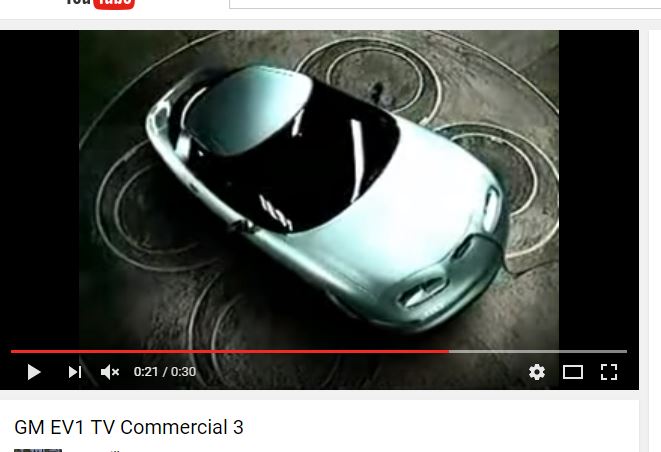The GM EV1: The Electric Vehicle Godfather

With all the attention Tesla gets and the large number of Nissan Leafs running all over most metro areas, it’s easy to think the modern electric car movement started only a few years ago.
As shown on “Who Killed the Electric Car” know, GM once produced its own electric car in the late 1990s called the EV1. Its 70-to-100 mile range rivaled the current Nissan Leaf, and it was only available as a lease for around $500 per month.
The General Motors EV1 was an electric car produced and leased by General Motors from 1996 to 1999. It was the first mass-produced and purpose-designed electric vehicle of the modern era from a major automaker, the first GM car designed to be an electric vehicle from the outset along with being the first and only passenger car to be sold under the corporate General Motors (GM) name instead of being branded under one of its divisions.
The decision to mass-produce an electric car came after GM received a favorable reception for its 1990 Impact electric concept car, upon which the design of the EV1 drew heavily. Inspired partly by the Impact’s perceived potential for success, the California Air Resources Board (CARB) subsequently passed a mandate that made the production and sale of zero-emissions vehicles a requirement for the seven major automakers selling cars in the United States to continue to market their vehicles in California. The EV1 was made available through limited lease-only agreements, initially to residents of the cities of Los Angeles, California, and Phoenix and Tucson, Arizona. EV1 lessees were officially participants in a “real-world engineering evaluation” and market study into the feasibility of producing and marketing a commuter electric vehicle in select U.S. markets undertaken by GM’s Advanced Technology Vehicles group. The cars were not available for purchase, and could be serviced only at designated Saturn dealerships. Within a year of the EV1’s release, leasing programs were also launched in San Francisco and Sacramento, California, along with a limited program in the state of Georgia.
The EV1’s discontinuation remains controversial, with electric car enthusiasts, environmental interest groups and former EV1 lessees accusing GM of self-sabotaging its electric car program to avoid potential losses in spare parts sales (sales forced by government regulations), while also blaming the oil industry for conspiring to keep electric cars off the road. As a result of the forced repossession and destruction of the majority of EV1s, an intact and working EV1 is one of the rarest cars from the 1990s.
While the styling is straight out of the ’90s, the EV1’s design has aged well, even if John Davis did call it a “soap bar” in his 1997 review of the car. The 26 lead-acid batteries had to be replaced every 450 charges, but its electric motor made a surprising amount of power for the time—?137 horsepower.
The car’s cancellation is still controversial, especially since GM insisted on crushing all but one of the units it produced. Since that time, the story in the U.S. has been mostly SUVs and CUVs, but electric cars have been growing in popularity, especially lately.
It’s still a niche market and will be for years to come, but quite a few companies are bringing their own electric vehicles to market over the next few years. When EVs eventually find their success, to some degree, they’ll have the GM EV1 to thank for starting things off.
More like this
-
 Rewind
RewindThe Full-Fledged Revival of American Diesel Cars
Read MoreCan you feel it? There’s a big change coming in the American automotive landscape. For the past couple of years we’ve seen the steady increase of sales in trucks and..
-
 Rewind
RewindOutdated Car Accessories that We Definitely Won’t Miss
Read MoreEver-increasing numbers of cup holders large enough to accommodate super-sized jugs and an expanding suite of electronic features and entertainment invade our vehicles. However, there comes a time where we..
-
 Rewind
RewindThrowback Thursday: 1969 Corvette ZL1, Chevy’s “Exotic” Racer
Read MoreThe Corvette is not just an “American classic," it’s one of the most famous cars around. There are so many models and variations that every fan probably has a favorite...





Alex has worked in the automotive service industry for over 20 years. After graduating from one of the country’s top technical schools, he worked as a technician achieving a Master Technician certification. He also has experience as a service advisor and service manager. Read more about Alex.